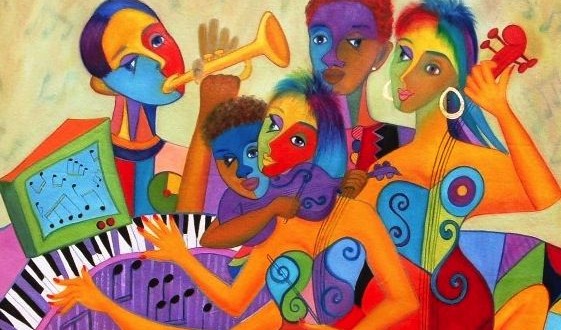The American musical art form jazz emerges in New Orleans around the advent of the 20th century. Jazz blends elements from varied traditions, including African and African American, religious, brass band, and blues styles. The improvisational music that results has a syncopated rhythm, and originally both the performers and audiences are African American.
New Orleans’ Storyville, a notorious Red Light district, is home to the brothels and bars that provide the only venues for jazz, since African American performers are banned from performing at white clubs. In 1917, the U.S. Navy, fearing dissipation and violence among sailors, shuts down Storyville, scattering jazz musicians, who join riverboat bands or move to cities such as Memphis, Chicago, St. Louis, and Kansas City, where local styles evolve. Ironically, the first jazz recording is made that same year by an all-white band.
Jazz’s popularity grows, and as it attracts a wider audience, so do campaigns to censor this “devil’s music.” Early detractors like Thomas Edison, inventor of the phonograph, ridicule jazz, saying it sounds better played backwards. A Cincinnati home for expectant mothers wins an injunction to prevent construction of a neighboring theater where jazz will be played, convincing a court that the music is dangerous to fetuses. By the end of the 1920s, at least 60 communities across the nation enact laws prohibiting jazz in public dance halls.
The introduction of Prohibition in 1920 brings jazz into gangster-run nightclubs, the venues that serve alcohol and hire black musicians. These speakeasies allow whites and blacks to mingle socially for the first time; they also draw young audiences from all social classes, attracted to both the music and the increasingly suggestive jazz dances. Both the mixing of the races and the widespread belief that jazz incites sexual activity causes critics of jazz to step up their efforts. “Jazz was originally the accompaniment of the voodoo dance, stimulating half-crazed barbarians to the vilest of deeds,” proclaims Ann Shaw Faulkner, president of the General Federation of Women’s Clubs, a powerful alliance of women’s social and reform groups that launches a crusade against jazz in 1921.
But the reformers do not halt the growing popularity of jazz among both black and white audiences. Recordings and radio broadcasts allow the music to reach beyond nightclubs, and the arrival of virtuosos such as New Orleans-born cornet and trumpet player Louis Armstrong and composer Duke Ellington propel the art form to a higher level.
In the following decades, jazz continues to evolve, attracting both black and white audiences. Increasingly it is identified as one of America’s greatest contributions to music and becomes a subject of academic study and analysis. Public opposition to jazz fades as new generations embrace swing, big band, bebop, and later styles. However, during the Cold War, jazz is still banned in some Eastern European countries for being subversive and decadent. Well into the 1980s, the underground clubs where it is performed in these countries provide meeting places for political dissidents.

 Canada Journal – News of the World Articles and videos to bring you the biggest Canadian news stories from across the country every day
Canada Journal – News of the World Articles and videos to bring you the biggest Canadian news stories from across the country every day

